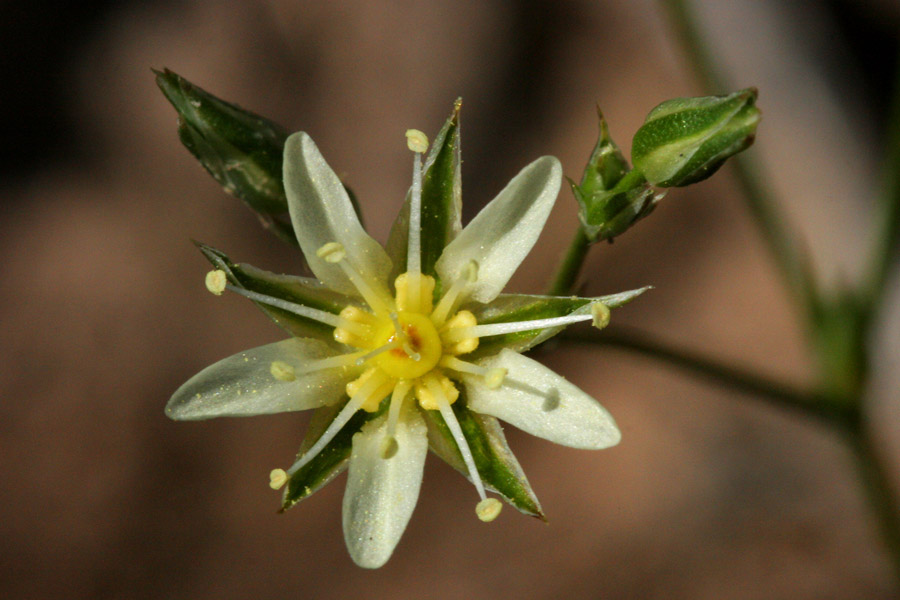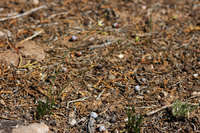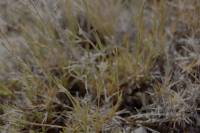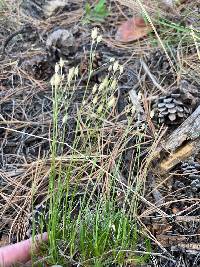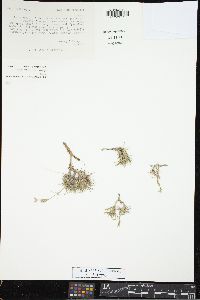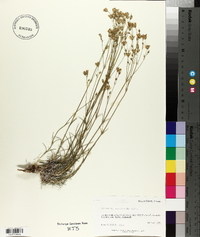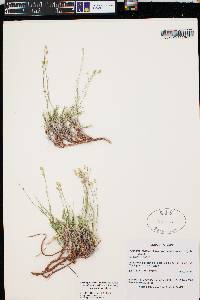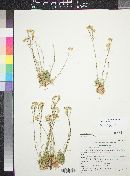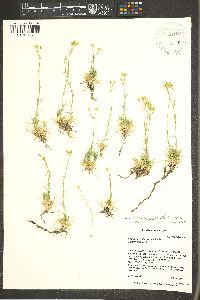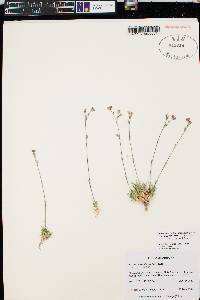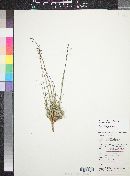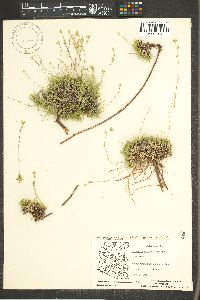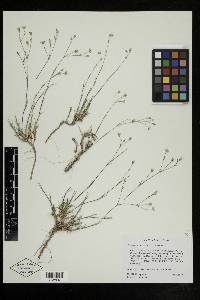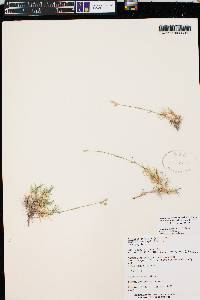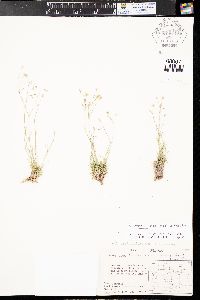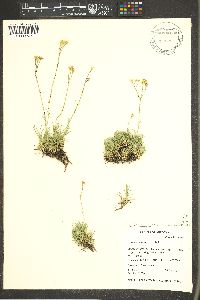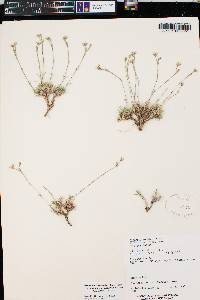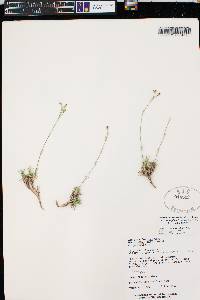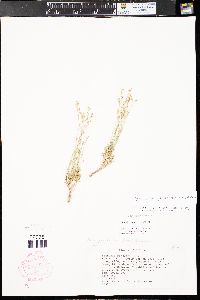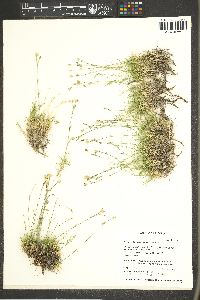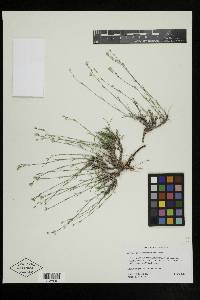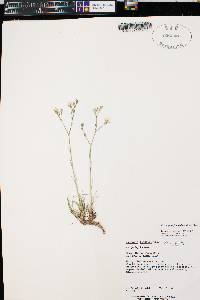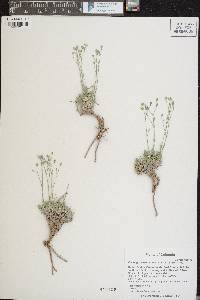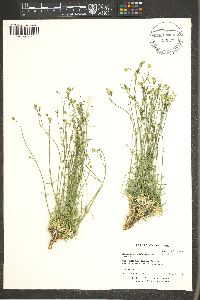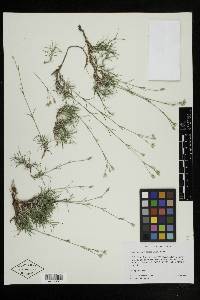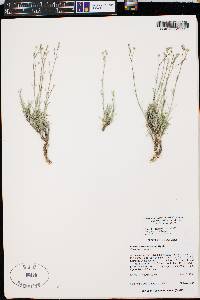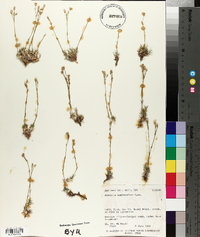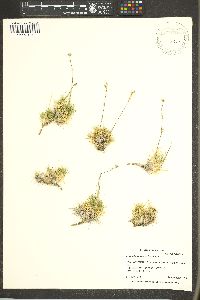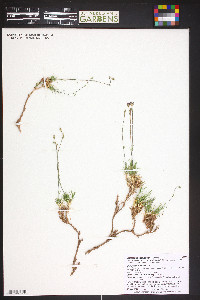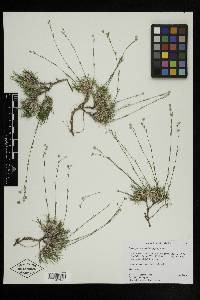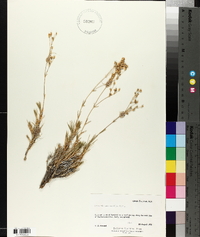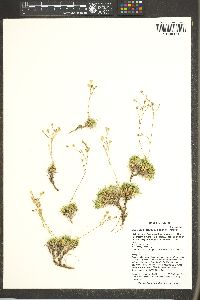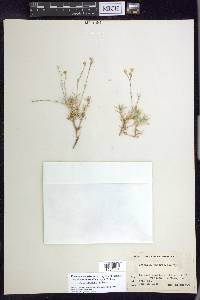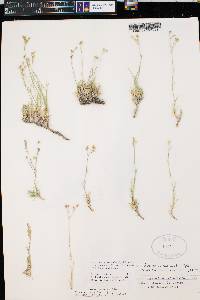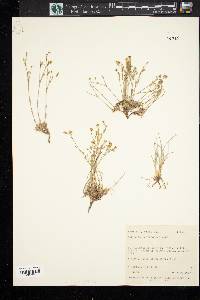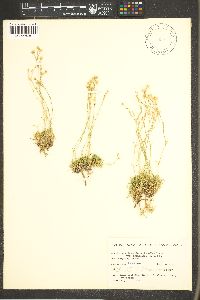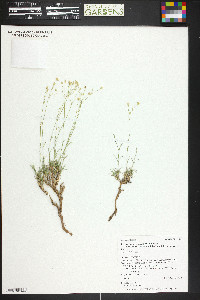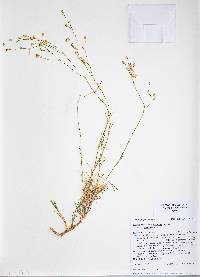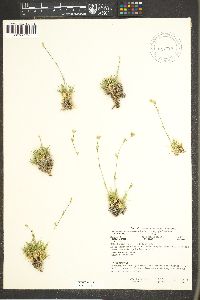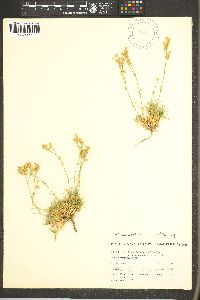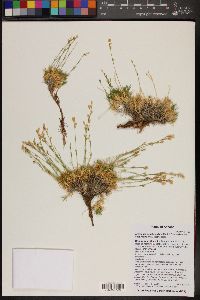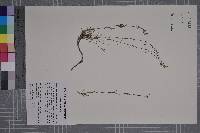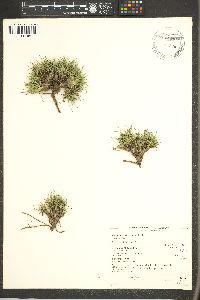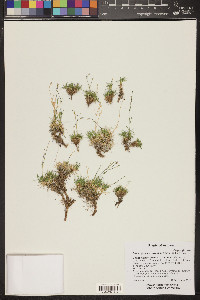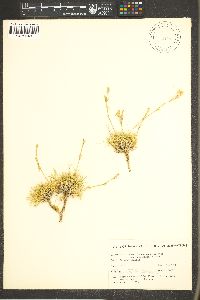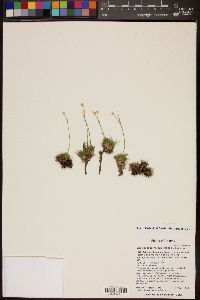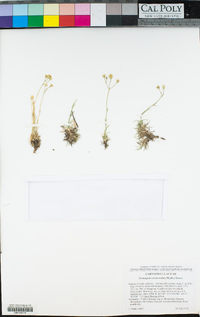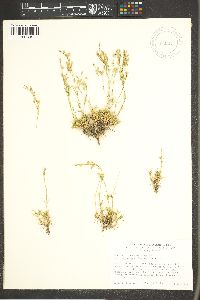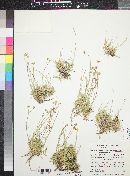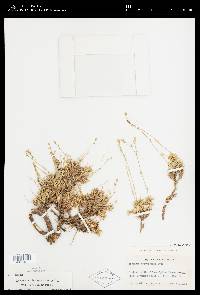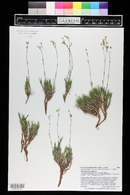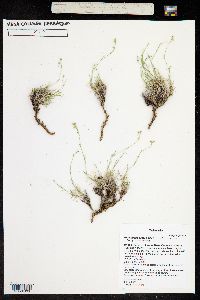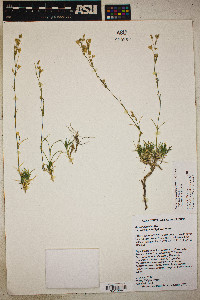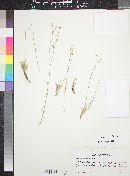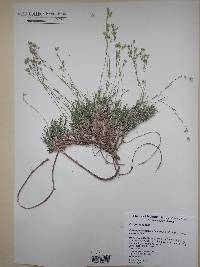Eremogone eastwoodiae
|
|
|
|
Family: Caryophyllaceae
Eastwood's Matted Sandwort, more...Eastwood's sandwort, Eastwood's sandwort, Eastwood sandwort
[Arenaria eastwoodiae Rydb., moreArenaria eastwoodiae var. eastwoodiae Maguire] |
Plants densely matted, green, not glaucous, with woody base. Stems erect, (8-)10-25 cm, glabrous or stipitate-glandular. Leaves: basal leaves persistent; cauline leaves usually in 2-4 pairs, reduced distally; basal blades spreading to recurved, needlelike, 1-3(-3.5) cm × 0.5-0.7 mm, flexuous to rigid, herbaceous, apex spinose, glabrous to puberulent, not glaucous. Inflorescences (1-)3-17-flowered, ± open cymes. Pedicels 3-30 mm, glabrous or stipitate-glandular. Flowers: sepals green or purplish, 1-3-veined, lanceolate to ovate-lanceolate, (3.5-)4-6.5 mm, not enlarging in fruit, margins broad, apex narrowly acute to acuminate, glabrous or stipitate-glandular; petals yellowish white or sometimes brownish to reddish pink, broadly oblong-elliptic to oblanceolate, 4-6.5 mm, 0.9-1.1 times as long as sepals, apex rounded; nectaries narrowly longitudinally rectangular, apically cleft or emarginate, adjacent to filaments opposite sepals, 1-2 mm. Capsules 4-6 mm, glabrous. Seeds brown, ovoid to suborbicular with hilar notch, 1.2-1.7 mm, papillate, subechinate; tubercles conical. The Hopi Indians may use Eremogone eastwoodiae as an emetic (B. Maguire 1960). The nectaries in Eremogone eastwoodiae are different from those of most other species of the genus in North America since they are a separate bilobed structure adjacent to, but not a direct enlargement of, the filament bases opposite the sepals.
General: Perennial, 10-25 cm tall; plants densely matted, stems erect, glabrous or glandular-stalked; herbage green, not glaucous; caudex branched, woody. Leaves: Basal and cauline, opposite, simple, needle-like or filiform, 1-3 cm long, reduced upwards, blades rigid, glabrous, margins usually minutely ciliate, apex sharply pointed; cauline leaves usually in 2-4 pairs. Flowers: Inflorescence a terminal or raceme-like cyme, open; pedicels slender, shorter to longer than the subtending bracts; sepals broadly ovate to somewhat orbicular (the herbaceous portion elliptic, oblong, or lanceolate), 2- 3.5 mm long, midvein prominent, glabrous, margins membranous, apex obtuse; petals 4-lobed (the apex appearing fringed) for up to half their length, 1.7-2.5 mm long, white; flowers August-September. Fruits: Capsule, ovoid to urn-shaped, 4-6 mm long, opening by 6 teeth; seeds ovoid to suborbicular, brown. Ecology: Hills, mesas, deserts, stony to sandy soils; 1100-2400 m (3500-8000 ft); Apache, Coconino, Maricopa, and Navajo counties; southwestern U.S. Notes: Two varieties, both of which occur in Arizona, are recognized: var. eastwoodiae, distinguished by glabrous stems and pedicels, and var. adenophora, distinguished by glandular-stalked stems and pedicels. Minuartia obtusiloba (twinflower sandwort, alpine stitchwort) [=Arenaria obtusiloba] is a tufted to mat-forming perennial, the stems glandular-stalked; leaves are awl- shaped and rigid; inflorescence is usually of a solitary flower, with glandular-stalked pedicels; sepals are conspicuously 3-veined towards the base, the apex often purplish; petals are ovate to spatulate, surpassing the sepals, white; capsule is narrowly ellipsoid, equaling the sepals. It is found in the alpine and subalpine habitats of the San Francisco Peaks (Coconino County) at 3500-3700 m, (11500-12000 ft). Minuartia rubella (beautiful sandwort, reddish sandwort, boreal stitchwort) [=Arenaria rubella] is similar to M. obtusiloba, but the inflorescences are open cymes, 3-7 flowered, rarely solitary, with densely glandular-stalked pedicels; petals are elliptic, shorter than to somewhat surpassing the sepals; capsules are borne on a stipe, and are longer than the sepals. This species is primarily found on the San Francisco Peaks, but collections have been made from the Grand Canyon and the Kaibab Plateau. Similar in appearance to Minuartia is Sagina saginoides (Arctic pearlwort), a small and inconspicuous perennial characteristic of alpine habitats. It is primarily distinguished from Minuartia by having 4 or 5 sepals, 4 or 5 styles, and 4 or 5 capsule valves (Minuartia has 5 sepals, mostly 3 styles, and 3 capsule valves). Collections have been made from the San Francisco Peaks and the North Rim of the Grand Canyon. The Hopi use Eremogone eastwoodiae as an emetic for stomach sickness. Editor: Springer et al. 2008 |

